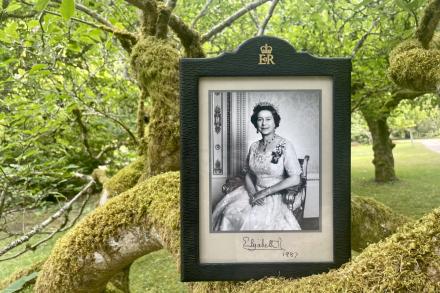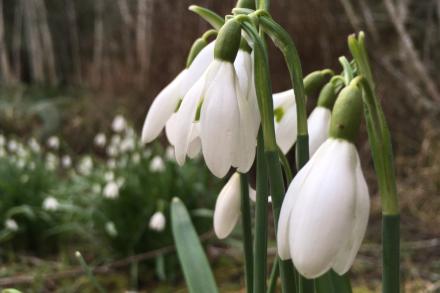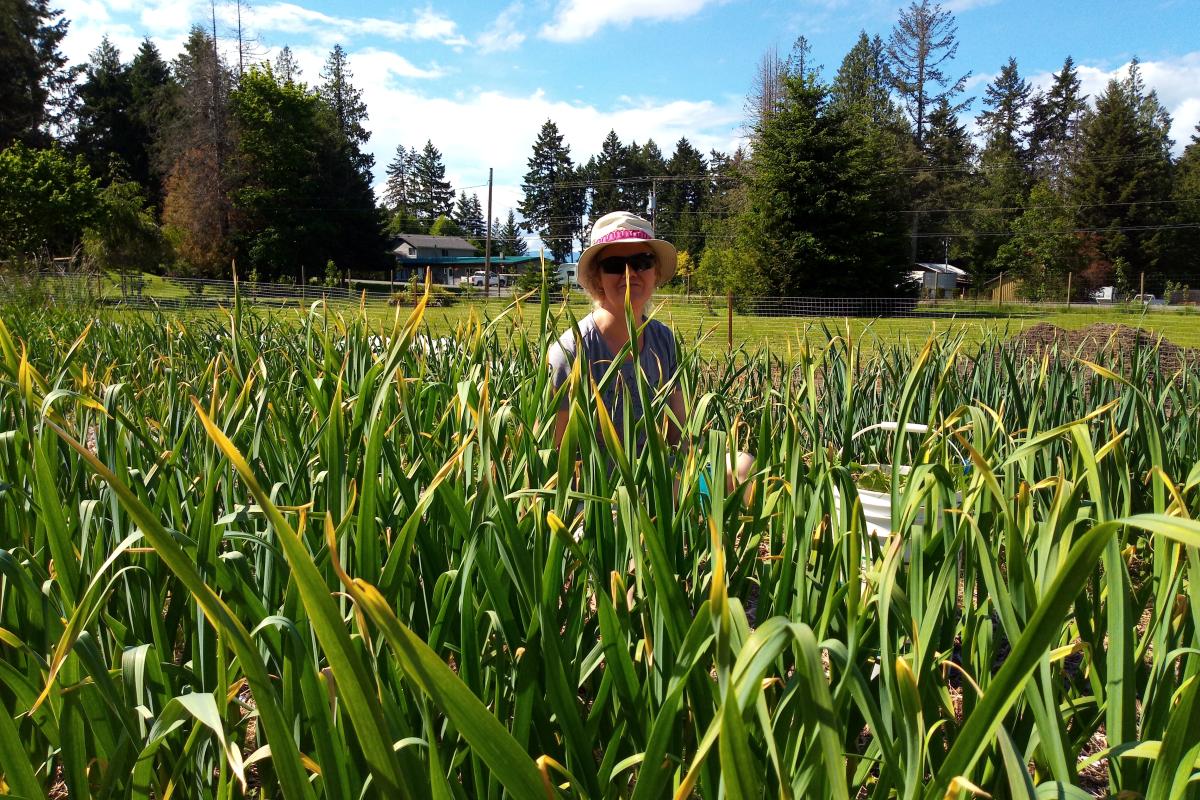
English Professor Dr. Toni Smith’s experiences with the back-to-the-land movement
By day, Dr. Toni Smith is an English professor at Vancouver Island University. Also by day, she is living the agrarian life with her husband and her mother on a two-acre farm in the Cowichan Valley. Her commentary on the back-to-the-land lifestyle has been featured in such publications as Macleans and The Atlantic.
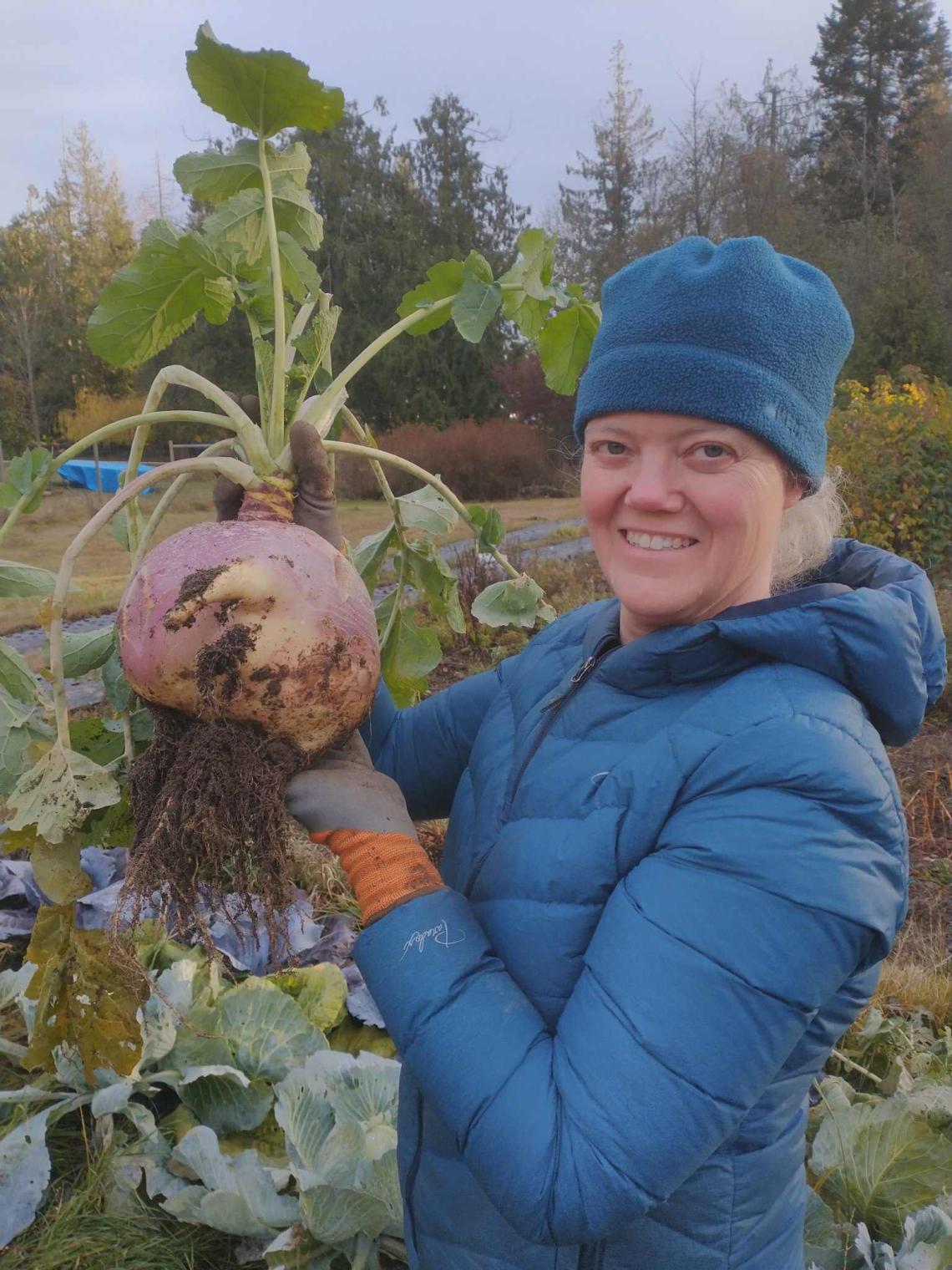
How did Smith become a small-scale farmer? It started with her passion for food. She loves to grow food and cook, and she’s fascinated by food history and all its intersections with culture, gender, ecology and agriculture, home design, colonialism and the global economy. Aside from the two-acre farm in the Cowichan Valley where she lives, she and her husband also lease an additional acre nearby on which they are growing a commercial crop of heirloom garlic varieties. We caught up with her recently to learn more about what she likes about this lifestyle.
How long have you been teaching at VIU and why did you choose VIU?
I started in VIU’s English Department in 2007 as a sessional instructor, just before I finished my PhD. I loved the campus immediately; it felt like home to be on the hillside overlooking the ocean. I had no real interest in working at a large university like the ones I had attended as a student, and I have loved working in a place that is student- and teaching-focused with a diverse demographic. We are human-scale here!
What is the back-to-the-land movement all about?
The “homesteading” movement now means something completely different than the way it was originally conceived, which was a means to get white settlers to occupy North American territories in the West and to displace Indigenous peoples as quickly as possible. The Homesteading Acts in 19th-Century Canada and the US were nation-building efforts that transformed the physical landscape while creating the iconic image of the hardy pioneer farmer and idealizing an agrarian lifestyle.
Somewhere along the way, through cycles of back-to-the-land movements in the 1930s, 1960s and 1970s, and more recently after the 2008 financial crisis and now again, the definition has shifted dramatically. While “homesteading” (and “urban homesteading”) still idealizes the health and well-being benefits of an agrarian life that is more connected to rhythms of land and animals than city life often is, it has also become associated with the goal of independence from the global industrial economy (self-sufficiency), and something of a state of mind. Social media encourages interested people to start wherever they are, telling them that they can “homestead” by growing a balcony garden or learning to preserve food in apartment kitchens. Many still fantasize about owning large acreages and producing everything they need for their families, though!
How long have you been living this lifestyle (and can you share a bit about what your day looks like)?
When my husband and I moved to the Cowichan Valley in 2009, we began gardening in earnest on a beautiful half-acre property. I worked toward growing all our own vegetables, and we were lucky that the property came with established fruit trees and berry patches. We began raising chickens, learned to butcher and cook roosters (I had been vegetarian for almost 20 years!), and to brood and raise chicks. We had so much fun!
In 2017, in search of more land, we joined households with my mom and moved to two acres in Cobble Hill. This time we started from scratch, building gardens and chicken coops, planting an orchard and new berry patches. We have bred heritage chickens and run a small hatchery business, but now are focusing on the garlic crop.
My days vary so much according to the seasons. This time of year (winter), we are heating with our woodstove (stocked with deadfall from the neighbourhood). I start the day with the farm pup, Kenna, doing the rounds of the garden and the chicken coop, checking that everything is normal. Breakfast is homemade yogurt and frozen berries picked last summer, with simple mueslis, and then we head out for a good walk on the local trails. If I’m working from home, then at lunch Kenna and I do the rounds again, picking up the eggs and tidying the coop as necessary. I might harvest a cabbage from the garden or pull a home-raised chicken out of the freezer for dinner, and the eggs are washed and packed up for customers. The spring and summer are much busier seasons, with seed-starting, garden prep, weeding and fertilizing in the garlic patch, and raising chicks, depending on the year. We are selling garlic in August and September as well.
How do you balance your teaching career with your agrarian lifestyle?
There are never enough hours in the day and I try to be strategic about how many projects in either sphere to take on in a given year. Like most small farmers, we have burned out before! This past year, we brought home our new farm puppy, and so I planted almost no garden at all. As we have expanded the garlic business to now planting up to 25,000 heads, we have scaled back our chicken flock considerably. Doing it all is impossible!
I also love to bring these passions and experiences into the classroom whenever I can. Whether it’s teaching courses in Canadian literature that examine relationships to agriculture and landscape or using readings in food studies to learn about academic writing techniques, food production is a useful, accessible and fascinating topic.
What’s your favourite part about your lifestyle?
The physical and outdoor work on the property is such a wonderful counter to all the computer and book work of academic life. I am a homebody and love a home-based life that centres around food.
Can you tell us a bit about your research with colleague Anna Atkinson?
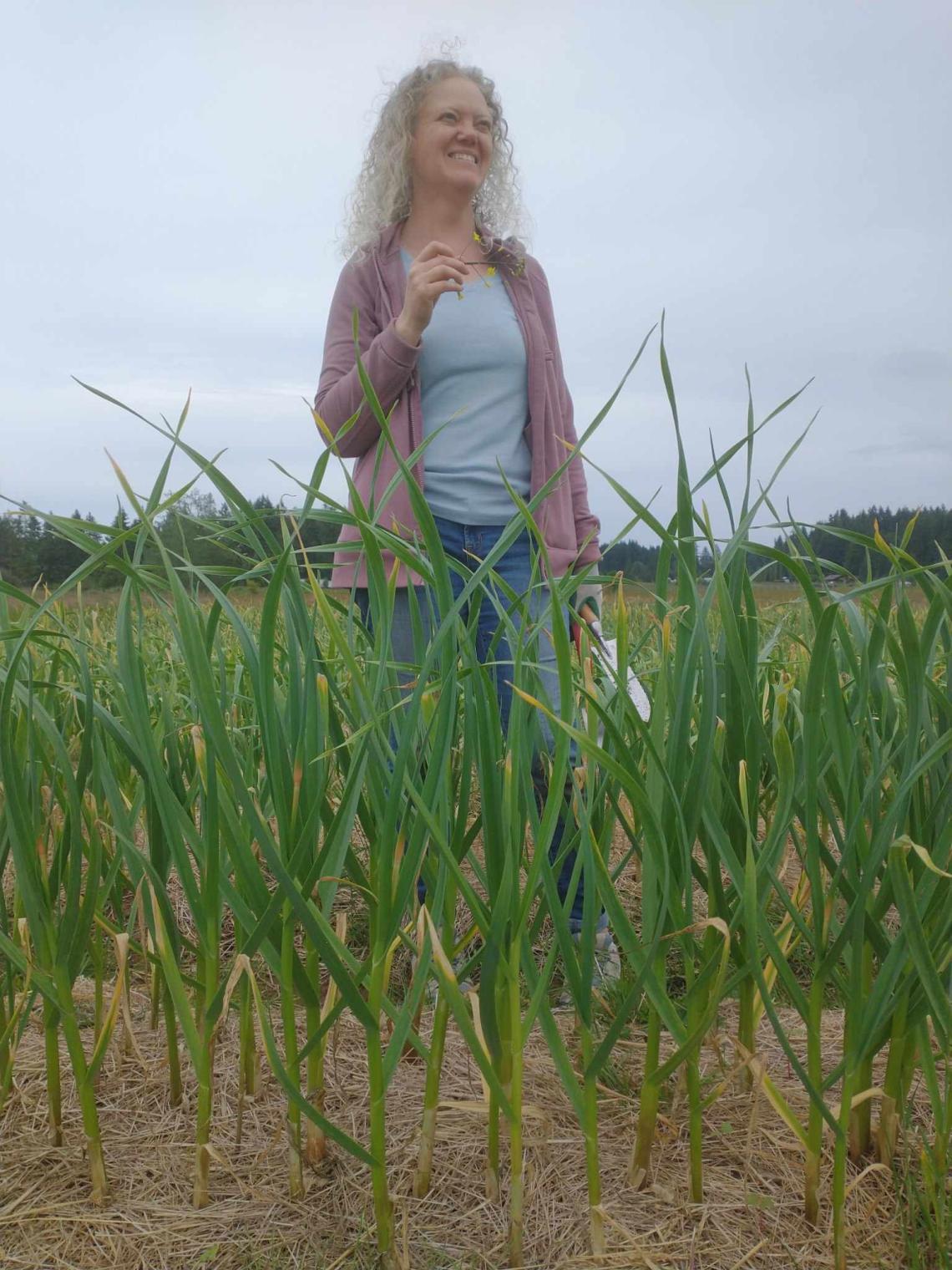
VIU English Professor Dr. Anna Atkinson and her husband, VIU Philosophy Professor Dr. Robert Pepper-Smith, spent more than a decade farming just outside Nanaimo at a much bigger scale than us. In our many conversations about why people historically keep going “back-to-the-land” even after previous generations have tried and then “failed” and returned to city life, Anna and I decided to put our academic minds to work. Anna’s expertise in 17th-Century American writing helped us to see that the founding narratives of the original American colonies depicted a promised land of agrarian bounty that I saw was repeated in the immigrant recruitment campaigns of early 20th-Century Canada. We started to understand that in times of economic crisis, war or political upheaval, young, educated, middle-class young people want to pursue a different lifestyle and find some control over life’s essentials, like food. Given our founding national narratives, imitating pioneer farmers is an accessible imaginary life (thanks, Little House on the Prairie!) that feels like it’s the opposite of the alienating elements of urban modernity.
But the true, historical homesteading life and its goals of the time don’t usually provide the independence and well-being that people are looking for. That kind of homesteading existed in a very specific and short-lived set of political, social and economic circumstances that don’t much resemble our own. Instead, agrarian life today is hard physical labour with scant financial security and little independence from the global economy (okay, actually none of that is new!). Our research concludes that the North American white settler? cultural focus on individual independence and self-sufficiency is a dead end. We have come to understand that, in fact, we are incredibly fortunate to live in a place with strong Indigenous leadership and dedicated Elders who teach us that interdependence, community and attentive relationships with our local ecosystems is what truly sustainable living looks like.
Why do you think these back-to-the-land movements are so popular right now?
I think many people understand that our current modern existence depends on very fragile and exploitative systems. If you start to look more deeply into any aspect of modern life –travel, clothing, food, the internet, housing, cosmetics, anything! –it doesn’t take long to find a dark underbelly and damaging environmental impact.
Growing food feels like a useful, accessible thing to do that puts us back in control of one element of life. Composting and keeping a few chickens reduces waste and puts us back in touch with living systems. It’s a valuable and healthful hobby!
What’s your advice to someone who wants to try it?
Well, the major piece of advice that I read over and over again because it’s true, was to start small and build skills. I ignored that completely, but it’s good advice! Start a compost pile and a small veggie bed or some containers wherever you are. You can grow a lot in the summer and learn what it takes to do so. Working with living systems is deeply transformative over time.
What’s next for you?
I’m hopeful that we’ll have a better growing year than last year’s epic November rains and then miserably cold spring. A healthy garlic crop this year will keep us busy all summer and fall. I’m also planning a proper home garden again after last year’s break, and there are also chicken runs to re-organize, a greenhouse to put up, and more berries to plant! I’m feeling the drive to save seeds in a more serious way. Access to good seed stock that is well-suited to our growing area is always precarious and I’m looking for more security in that realm.


